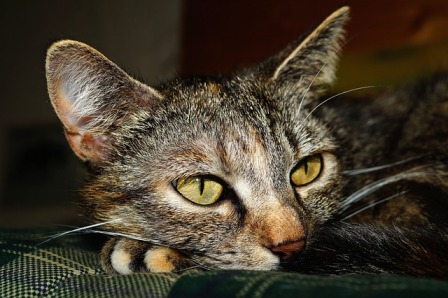Urinary Diseases in Cats
Urinary Diseases in Cats
Urinary diseases in cats that affect their lower urinary tract, bladder and urethra, are better known as feline lower urinary tract disease (FLUTD) and are recognized as a set of conditions usually caused by various factors. FLUTD appears mostly in middle-age cats, indoor cats, or overweight ones. Among the main causes of urinary diseases in cats, feline idiopathic cystitis (FIC), urinary stones, and urethral obstruction, of which the last one is the most dangerous that requires hospitalization. To all urinary diseases, the common thing is its recurrence. Thus, it is of greater importance to know how to act and act in time. The article “Urinary Tract Problems in Cats” describes common causes and symptoms that can help us to notice them when emerge.
Urinary Diseases in Cats
What Causes Lower Urinary Tract Problems in Cats?
• Stones, crystals or debris accumulation in the bladder or urethra
• Urethral plug (accumulation of debris from urine)
• Bladder inflammation or infection
• Incontinence from excessive water drinking or weak bladder
• Injury to, or tumor in, the urinary tract
• Stress
• Spinal cord problems
• Congenital abnormalityHow Can I Tell if My Cat Has Lower Urinary Tract Problems?
The following signs may indicate that your cat is having trouble with his urinary tract:
• Inability to urinate or only passing a small amount of urine
• Bloody or cloudy urine
• Loss of bladder control, dribbling urine
• Increased frequency of urination or visits to the litter box
• Straining and/or crying out in pain when trying to pass urine
• Prolonged squatting in litter box
• Fear/avoidance of litter box and soiling in inappropriate places
• Constant licking of urinary opening
• Strong odor of ammonia in urine
• Lethargy
• Vomiting
• Increased water consumption
• Hard, distended abdomen
The article “Feline Lower Urinary Tract Disease” suggests us some steps we can undertake to decrease the risk of urinary tract disease.
Steps to Reduce Occurences and Signs of Lower Urinary Tract Disease
1. Feed small meals on a frequent basis.
2. For cats with a history of struvite formation, owners should feed diets that promote the formation of urine that is acidic. Most commercial diets meet
this criteria. Avoid supplementing such diets with additional urinary acidifiers, because over-acidification can cause metabolic acidosis, impaired
kidney function, and mineral imbalance.
3. Provide clean, fresh water at all times.
4. Provide an adequate number of litter boxes (usually one more than the number of cats in the household).
5. Keep litter boxes in quiet, safe areas of the house.
6. Keep litter boxes clean.
7. Minimize major changes in routine.
Not only that we can take some steps to reduce the risks, but we also can help the cat in reducing stress from its surrounding. We can keep a daily routine as before, and include the changes gradually; try to make its environment stimulating by new toys and scratching posts; spend more time with the cat in playing and cuddling; and provide the cat with enough space. Relieving stress and pain is of a great importance for a suffering cat. Stress has been shown up as a leading trigger for cystitis in cats, and pain has been its side effect. Cats are directed to us and we can make much for our lovely pets and assist them to go through this painful phase as smooth as possible.










